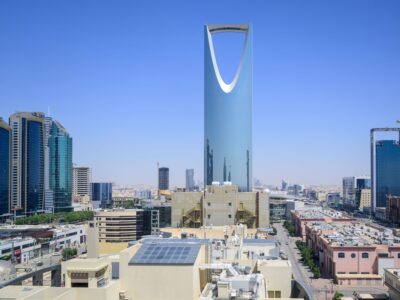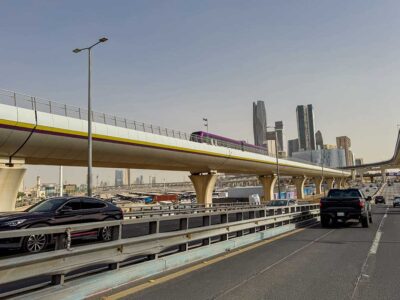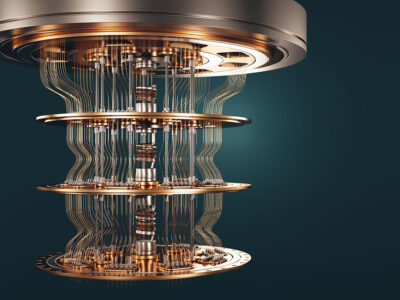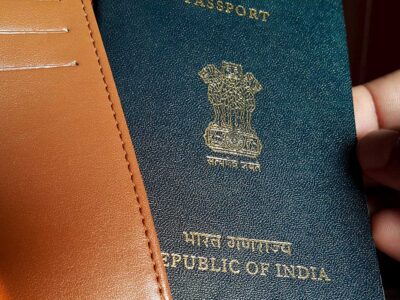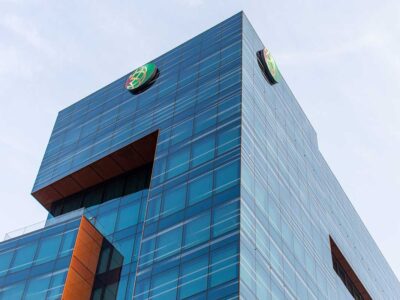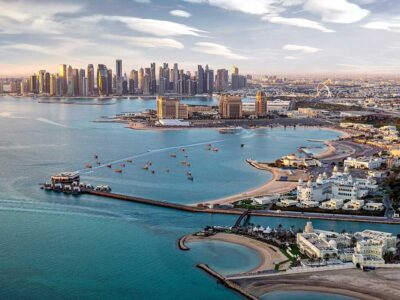The South African Constitutional Court was built out of Johannesburg’s most notorious prison complex to become one of the country’s most important symbols of healing and regeneration.
When the Old Fort Prison complex finally closed in 1983 it left a scar on Johannesburg’s cityscape. The scar-still tender from the injustices of the past-created an atmosphere of ominous foreboding as the high, thick walls echoed a painful reminder of the suffering that occurred within.
Hundreds of thousands of people had been jailed and tortured at the Old Fort Prison since it was built in 1892. The Awaiting Trial Building left prisoners incarcerated indefinitely without trial and Number Four-the name given to the frightening section in which men of colour were jailed-saw prominent political activists including Nelson Mandela, Mahatma Ghandi and Albert Luthuli detained there under the apartheid regime.
Historically a site of pain and suffering where basic human rights were severely neglected, it was this area that was chosen to be the site for South Africa’s new Constitutional Court.
In what was a deeply symbolic, carefully calculated decision, the Court complex was built to act as a bridge between past and present; a structure that embodied freedom, human rights and democracy built upon a site that had for so long strangled these very same ideals.
Adding to its historical significance, geographically speaking, the Court bridges the leafy, affluent suburbs of Parktown in the North with the bustling inner-city metropolis of Braamfontein. “It is right in the heart of Johannesburg. Right in the heart of the cyclone,” said Justice Yvonne Mokgoro, one of the sitting judges at Constitutional Court.
Justice under a tree
Once the site of the Constitutional Court was decided upon, the architects were chosen through an anonymous competition, which saw architects and urban planners from around the globe submit entries for the design of this crucial new building that would come to grace Johannesburg’s horizon.
As a court within the larger complex of Constitution Hill, the brief called for the disciplines of architecture and urban planning to come together to create a site that would incorporate not only the Court, but also a library, the judge’s chambers, gallery space, and a public arena.
The challenge was to create a space that is open and inviting to South Africans of all cultures and walks of life, while still evoking the presence and authority of the Constitutional Court, South Africa’s highest judiciary.
Despite more than 170 entries from architects in over 30 countries, it was the South African contingent of Andrew Makin and Janina Masojada from OMM Design Workshop (now called Design Workshop SA), and Paul Wygers from Urban Solutions that won the competition with their ‘justice under a tree’ design concept.
While traditional court structures are often monumental and inaccessible- donning high walls, intimidating steps and sterile chambers-Makin, Masojada and Wygers aimed to create a welcoming, open and inclusive space.They sought to create a structure that would invite people to experience and participate in the judicial system and learn more about the Constitution and democracy in a relaxed environment-ultimately, allowing them to participate in ‘justice under a tree’.
“Particularly in the Court foyer and chamber, we needed to achieve both the required gravitas to project the status of the Court, and to ensure a sense of welcome and accessibility to all that experienced it. It was the welcome problem of representing our particular form of ethical democracy,” explains Makin.
“This would require there to be no reliance on representation of historic or contemporary architectural language, whether colonial, indigenous or international. But rather that a unique language be conceptualised for the purpose,” he continues.
While it was an international competition, it is fitting that it was won by South African architects. “From the point of view that design is a channel through which values pass and are manifested, we are South Africans that believe in the cause of the struggle for freedom in our own land, and believe deeply in the values of the Constitution. Being South African probably advantaged us a great deal,” says Makin.
The architects emphasise that it was not principally a matter of design for design itself, but rather of entrenching the ideals of democracy and the Constitution through the built form and emphasising that the human injustices that once defined its existence, would never again be experienced inside its walls.
“Their approach was completely different. It was an inner approach… Africa was not, for them, an idealised concept. It was part of the urban environment in which they lived and worked,” said Justice Albie Sachs, prominent political activist and one of 11 original judges of the Court.
Creating new from old
The success of the Constitutional Court lies in its transparency. It is not a mask to forget the hurt of the past, but rather a structure that remembers apartheid as a painful stain on South Africa’s history, and moves forward to ensure the rights and dignity of its citizens are never again compromised.
Adding to the symbolic references that needed to be evoked by the Court, the brief was very specific with regards to what the Constitution Hill precinct needed to encompass: the Court chamber and library could not be more than one floor away from any of the judge’s chambers and needed be directly accessible from all of the chambers.
In addition to this, the Court chamber, library and administration area needed to be equally accessible to the public as well as to the judges.
With these specifications in mind, Makin, Masojada and Wygers chose to intelligently incorporate some of the materials and structures of the Old Fort Prison in the new court complex.The stair towers of the Awaiting Trial Building have been retained within the foyer and court chambers, and in a symbol of great significance, Constitution Square, an open, public space bathed in natural light, lies directly on top of the site of the once darkly repressive Awaiting Trial Block.
The architects of the Court emphasise that while it was a tough decision to replace the Awaiting Trial Building with Constitution Square, it was a significant choice: “In stark contrast to the apartheid laws prohibiting the gathering of more than two people at any time in any place [intended to smother political opposition], Constitution Square provides a space for the gathering of masses of people outside the front door of the court foyer and all around the court chamber,” says Makin.
The bricks that were recovered from the Awaiting Trial Building after it was demolished have been used in dry-packed form as the walls of the Court Chamber in an effort to reiterate that the bricks that once stood to incarcerate prisoners now stand to defend freedom and human rights.
As Justice Sachs often says in his legendary tours around the building, “There are six materials used in the court: reused bricks from the Awaiting Trial Building, concrete as the ‘stone’ of our times, glass for transparency, steel from our mills, black slate from our quarries… and light.” Light on a hill
It is perhaps Nelson Mandela’s experiences at the Fort and Court that best represent its transformation. Mandela, who aptly described Constitution Hill as “a beacon of light”, first visited the fort complex as a young lawyer, then later as a prisoner in Block Four and the Awaiting Trial Building and finally, he returned to the court as the president of South Africa.
“[Constitutional Hill] seeks to be the seam that stitches together a terrible past with a future full of hope and possibility. In doing so, it must, and does, identify, acknowledge and respect the suffering of the past. Healing cannot be possible without truth and reconciliation,” says Makin.
The building of the Constitutional Court began in 2001 and officially opened on Human Rights Day-March 21, 2004-and it is a humble, yet self-assured keeper of the human rights of all South Africans.
A guiding light that shows that change is possible after years of turmoil, it is not meant to be an answer to the problems of past or a cure for the ills of the present, but it is an important symbol of hope and revival.
